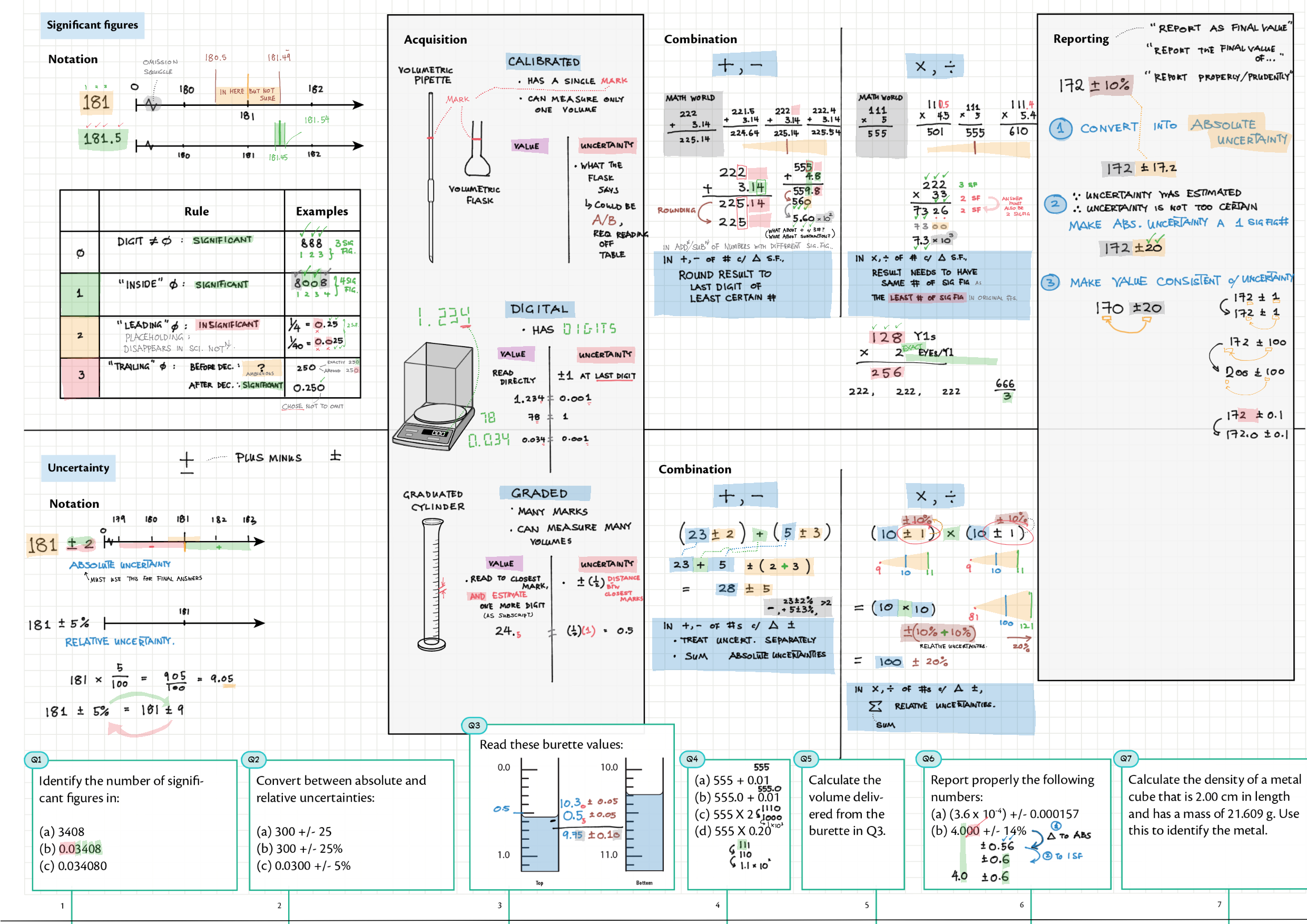# Habits
I place great emphasis on building standardized components, using a refined workflow. Standard components enables creations of greater complexity. This extends to actions that I do in class everyday: not having to think about how to do routine things open up situation awareness for improvising in the teachable moments.
Many of the workflow are quite complex. These technicalities, often including step-by-step procedures, are expanded into a companion section. The page 2B. Techniques is the entry point to this How To section.
# Drawing-based teaching / note template
In a "standard lesson", we go back-and-forth between me teaching a new skill/concept, and students immediately attempting to use it on a mini-whiteboard. The "standard lesson" occurs in about three-quarter of classes.
At the beginning of class, students collect a color hard-copy of a note template. I have the same template on my iPad, and explain through filling the template. The provision of a template means that they can follow along for note-taking in class.
The templates include some questions (usually when the question is long). We solve these in-class, along with other (shorter) questions I "freestyle",[1] using mini-whiteboards.
I chose this style because:
- I believe in visual representations reveal connections between different parts of the same topic, and I know that, despite all the excellent resources available, this is a missing resource.
- Chem has a very long syllabus, and it is essential to have an organized binder. By diploma age we assume students know how to take notes, but in practice most do not have the ability/experience of doing that.
- Pen-on-paper forces processing that staring at powerpoints don't.
- It is easy to copy / watch, and believe you can do something without actually being able to. The short cycles with immediate feedback ensures skill acquisition, and for me to adjust the next stages given where the students are at.
The principle weakness is that students can be lured into copying, often with tremendous effort to replicate my usage of color / precise lines. Verbatim reproduction is unhelpful, and often spills into the problem-solving time. Some students are frustrated because they feel they do not have sufficient skill to do a good job in keeping up with the note-taking.
# Designing note templates
I choreograph by topic, with a goal of being able to "hold" a whole concept on the same page. An example is shown for the following sheet holding "significant figure and uncertainty":

The design is described in the the Designing Note Templates section. This is
Vs death by powerpoint / bullet points
# Vector based workflow
# Concepts.app / iPad
Developing legible handwriting by tracing a font.
# As evolution from whiteboard
Bob Woodward
# Mini-whiteboard
# as evolution from popsicle sticks
# The upside-down writing party trick
Tracing font upside down.
# Timing every activity
# The eye-level squat/lean
# LaTeX
# Stories
Yoga teacher
# Stamps + collection
Printing as essential
# online variant
# Sequencing
Breaking down one concept into basic and dependencies,
Within:
- Lewis structure: octet rule before exceptions
- uncertainty: conversion btw abs <-> relative before combination
- ionization energy: main trends before subshells
What is convenient for teacher is not necessarily easy for students.
Outside:
- oxidation numbers before balancing redox equations before applications
Maturation time / asynchronicity
# Kahoot-quiz-test
Purpose of quizzes and tests as preparations
# Writing Tests / Quizzes
# Preparing tests
Value of writing my own tests
- my education
- fitting needs
- makes marking easier
Centrepiece + filling in gaps Spreadsheet of scope
SOLO method for spread in difficulty
Timing / points (40 pts total, 10 points for quizzes)
Recycling questions
iPad / concepts.app based workflow Copy-pasting "key" (CON, BOD, ECF)
"serial number"
Draft key -> marking -> common errors
# Grading tests
Marking with multi-colored pens Red: correction Green: correct Brown/purple: comments
# Feedback / survey
Two tokens on the table
Learning from Linda
Months to digest
# Personal / professional development
Pedagogy reading Chemistry reading (J Chem Ed, science) General science / technical reading (J Chem Ed) Graph (NYT graph)
Most of the time I have ad-lib'ed these for dozens of time already! ↩︎